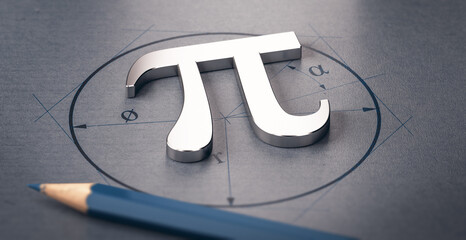Discover Pi123, an advanced mathematical extension of pi. Explore its applications in engineering, computer science, and cryptography, and understand its potential impact on modern technology.
Table of Contents
ToggleIntroduction
Pi123 is an extension of the traditional mathematical constant π (pi), which has long been a cornerstone in geometry and mathematics. While π represents the ratio of a circle’s circumference to its diameter, Pi123 takes this concept further by introducing additional dimensions and applications. It builds on the infinite and irrational nature of pi, applying these properties in new fields, including engineering, computer science, and cryptography. Over time, Pi123 has gained attention for its potential to revolutionize the way we think about mathematical constants and their role in technology.
The concept of Pi123 is not merely theoretical but has practical applications, particularly in complex computations and areas that require precision. By extending the properties of pi into higher dimensions, Pi123 opens up possibilities for solving problems that were previously considered too complicated or abstract. Moreover, this new version of pi is viewed as an opportunity to enhance various technological fields that rely on mathematical constants for their core operations.
Understanding the Traditional Pi and Its Limitations
Before diving deeper into Pi123, it’s essential to understand the traditional value of pi and its limitations. Pi, an irrational number, is the ratio of a circle’s circumference to its diameter. It has fascinated mathematicians for centuries due to its non-repeating, infinite decimal expansion. Despite its significance in geometry, pi has some inherent limitations when applied to more complex scenarios, particularly those that involve multi-dimensional or non-Euclidean geometries.
Pi123 builds on these limitations by offering a more versatile and adaptable approach to mathematical problems. For example, while pi is primarily used in two-dimensional geometry, Pi123 seeks to extend this concept into higher-dimensional spaces, where traditional pi might not be enough. This expansion is crucial for solving problems that involve 3D models, simulations, or other advanced mathematical applications.
The Evolution of Mathematical Constants
Mathematical constants have evolved over the centuries to meet the needs of advancing science and technology. The discovery of pi marked a pivotal moment in geometry, providing a stable, universal constant that could be applied to circles and spheres. However, as mathematics expanded into more complex fields, the need for additional constants became apparent. Pi123 emerged as one such answer, extending the principles of pi into a new realm of possibilities.
Pi123 represents a natural progression in the development of mathematical constants. By building on pi’s well-established properties, Pi123 offers more flexibility for addressing the challenges presented by higher-dimensional spaces and complex calculations. Whether it’s in designing intricate engineering systems or developing advanced algorithms for computing, Pi123 has the potential to redefine how we approach mathematical challenges.

What Sets Pi123 Apart from Traditional Pi?
The key difference between Pi123 and traditional pi lies in the former’s ability to extend pi’s properties into higher-dimensional spaces. Traditional pi is confined to two-dimensional geometry, where it represents the relationship between a circle’s circumference and diameter. Pi123, on the other hand, is designed to adapt and scale in more complex scenarios, making it suitable for multi-dimensional models, simulations, and advanced computing tasks.
Pi123 also incorporates elements of number theory and computational mathematics to offer more precision and adaptability. This makes it particularly useful in fields that require exact calculations, such as cryptography and engineering. Unlike traditional pi, which is often approximated for practical use, Pi123 offers a more precise framework for dealing with intricate mathematical problems.
Pi123 in Engineering
In the world of engineering, precision is paramount. Engineers rely on mathematical constants like pi to design and model everything from bridges and buildings to sophisticated machines. However, traditional pi often falls short when it comes to dealing with complex, high-precision designs. Pi123 addresses this issue by providing a more adaptable constant that can accommodate the intricacies of modern engineering projects.
Pi123’s potential to improve precision in engineering designs is particularly relevant in fields such as aerospace, civil engineering, and robotics. By offering a more flexible and accurate mathematical framework, Pi123 allows engineers to create more efficient and reliable systems. Moreover, its ability to work seamlessly with multi-dimensional models makes it an ideal candidate for simulating complex environments or structures, paving the way for advancements in engineering technology.Pi123 and Its Role in Computer Science
Pi123 has a significant role to play in computer science, particularly in areas that require high-level mathematical computations, such as graphics rendering, simulations, and algorithm development. The traditional pi is frequently used in algorithms related to graphics and geometry, but Pi123 takes this further by providing a constant that is better suited to multi-dimensional or highly complex computations.
In computer science, Pi123 can be used in simulations that require precise and efficient calculations. For example, it could be applied to the development of algorithms for machine learning, where accuracy and precision are key. Additionally, Pi123’s potential for reducing errors in computational tasks makes it a valuable tool for areas like numerical analysis and algorithmic problem-solving.
Cryptography and Pi123
Cryptography relies heavily on mathematical constants and algorithms to create secure encryption methods. Traditional pi has been used in some cryptographic systems due to its infinite and non-repeating nature. However, Pi123 offers several advantages over traditional pi when it comes to creating more robust encryption keys and codes.
Pi123’s extended properties provide a level of unpredictability that can enhance the security of cryptographic systems. By utilizing Pi123, cryptographers can generate more complex and secure encryption methods that are harder to break. Moreover, Pi123’s adaptability allows for the development of encryption systems that can scale with the increasing demands of modern technology, ensuring that sensitive information remains protected in an ever-evolving digital landscape.
Pi123 in Data Science and Machine Learning
Data science and machine learning involve the processing and analysis of large datasets to uncover patterns and make predictions. In these fields, precision and accuracy are critical, and Pi123 offers a new way to achieve both. By using Pi123’s extended mathematical properties, data scientists and machine learning engineers can develop more efficient algorithms and models that provide higher accuracy and faster processing times.
Pi123’s ability to handle multi-dimensional data makes it a valuable tool in data science, particularly when dealing with complex datasets or non-Euclidean spaces. Moreover, its precision and adaptability allow it to be used in various machine learning applications, from natural language processing to computer vision and predictive analytics. As the demand for more advanced data science techniques grows, Pi123 could become an essential tool for researchers and practitioners in the field.
The Mathematical Foundations of Pi123
To fully understand Pi123, it’s essential to explore its mathematical foundations. Pi123 builds on the well-established properties of pi, but it incorporates additional concepts from number theory, algebra, and calculus to extend pi’s applicability. The constant itself is not just an arbitrary number; it is based on a set of mathematical principles that allow it to function in higher-dimensional spaces.
Pi123 is designed to solve problems that traditional pi cannot, particularly in complex mathematical models that require multi-dimensional analysis. It integrates seamlessly with advanced mathematical techniques, offering a more robust and flexible constant for modern applications. Understanding the mathematical foundations of Pi123 is crucial for those looking to harness its full potential in fields like computer science, engineering, and cryptography.

Pi123 in Real-World Applications
Pi123 has already begun to show its value in a variety of real-world applications. In engineering, Pi123 has been used to design more efficient systems for aerospace and automotive industries, where precision is critical. In computer science, it has improved the speed and accuracy of algorithms used in simulations and artificial intelligence. Additionally, cryptographers are leveraging Pi to create stronger encryption systems that offer better security in digital communications.
These case studies demonstrate how Pi is not just a theoretical concept but a practical tool that is already making a difference in modern technology. As more industries adopt Pi123, its impact is expected to grow, leading to even more innovative applications in the future.
The Future of Pi123
The future of Pi123 is filled with possibilities. As technology continues to evolve, the demand for more precise and adaptable mathematical tools will only increase. Pi, with its ability to extend pi’s properties into higher dimensions, is poised to play a significant role in solving complex problems across various fields. Whether it’s in engineering, computer science, cryptography, or other areas, Pi offers a new way to approach mathematical challenges that were once thought to be insurmountable.
Looking ahead, Pi123 could become a standard in industries that rely on complex computations. As researchers and practitioners continue to explore its potential, we may see Pi used in even more groundbreaking applications that shape the future of technology.
Conclusion
Pi123 is a groundbreaking concept that extends the traditional mathematical constant π into a new realm of possibilities. Its ability to adapt to multi-dimensional spaces and handle complex computations makes it a valuable tool in fields like engineering, computer science, and cryptography. As we continue to explore its applications, Pi is set to revolutionize the way we approach mathematical problems and technological innovation.
The introduction of Pi123 marks an exciting new chapter in the world of mathematics and technology. It offers a more precise, adaptable, and flexible approach to solving problems that were once considered too complex. Whether you’re an engineer, computer scientist, or cryptographer, Pi holds the potential to enhance your work and pave the way for new advancements in your field.
Read also: NSHorseScreen Horse Health Monitoring with Cutting-Edge Technology





